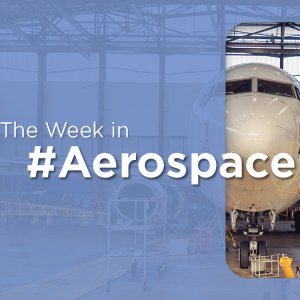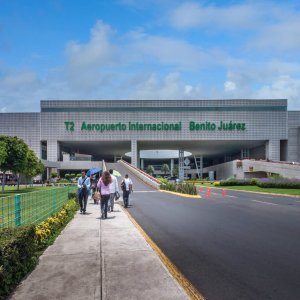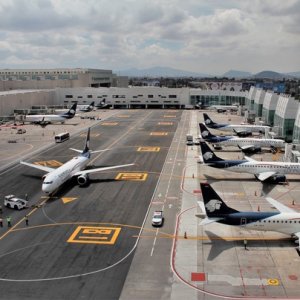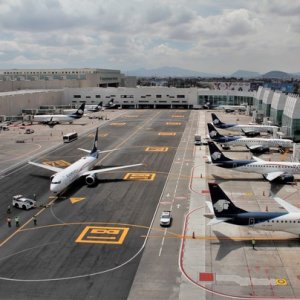Tech Independence Key for Mexico’s Aerospace Industry

STORY INLINE POST
Q: The Baja California Aerospace Cluster has made supporting SMEs its priority. How do the cluster benefit these companies?
A: Mexico must increase a greater percentage of national content in everything that falls under the classification of a maquila operation. Large companies, mainly exporters that manufacture and assemble in Mexico, are used to bringing everything they need from abroad, assembling the product in Mexico and sending it elsewhere after completion This has helped historically the creation of jobs while maintaining social cohesion, but we aspire to do more with emerging SME's that also wanted to be part of the value chain. We want to make it clear that the clusters are here to promote the home-grown development of innovative technology, supported by those same large corporations that came to Mexico and due to global trends require the involvement of our national industry to maintain their competitive edge. By boosting the national industry’s participation and providing a higher percentage of national content, we stop being a place that is a secondary stop and more a natural ally in a healthy ecosystem.
We strive to identify the strengths of these small and medium-sized companies. The Baja California region is bordering the US in the western hemisphere, thus has a larger spectrum of manufacturers and service providers, including entrepreneurs with an exceptional global vision. What the cluster does is scout these companies and through a gap analysis determine how they could serve the aerospace sector. Most of our regional industry is receptive and open to new opportunities because they already have quality standards, precisely because they have been successfully participating in another type of global industry located here. As a cluster, our goal is to identify these companies and help them achieve the standards that the industry requires while evaluating the possibility of participating in the aerospace sector.
Q: What key alliances have been the focus of development for the cluster?
A: We have a signed agreement with the Aerospace and Defense Forum, which is a group in the western US region supporting similar initiatives like ours. We also have a similar agreement with Colombia. When we participated in the creation of the Colombian aerospace cluster, we did so with the intention of providing them with our best tools, sharing our experiences in terms of what worked for us and what did not. This helped develop clusters across the country. We started with the cluster in Medellin, and there are now seven clusters in Colombia now grouped with its own national federation. We applied a similar initiative in Guanajuato, and we plan to replicate it in Zacatecas. In that specific case, we have already provided a proposal to the state’s government. We also have an initiative with the government of Aguascalientes to develop the same plan after they approached us.
In general, we are looking to clusterize the aerospace industry in as many places as possible, but obviously, understanding how a cluster operates is sometimes confusing and difficult. Our role is to help these new initiatives understand how they can develop and operate successfully. We did the same in Baja California Sur and Sinaloa and we worked in harmony the existing clusters in Nuevo Leon, Chihuahua, Queretaro and Sonora.
Q: How will the industry evolve in relation to technology?
A: Today, we cannot be oblivious to two important elements: technology and people, specifically younger talent. When we combine elements of technology with new talent, the result is creativity and disruption. It has been young people who have taken corporations, companies and SMEs forward during the COVID-19 pandemic because they understand digital services, and they have been the ones to help us migrate toward new technologies and develop through them.
Everything that rises from the ground and that is regulated by civil aeronautics, is the business of the future. And the future is related to technological devices that, remotely, can do a job that you would have had to do manually before or mechanically. There is room for everyone in this new era, which is good because previously, this new technological space was limited to mature economies in the world with today’s avenues of communication, information can be shared easily between one place and another. That also opens opportunities for people who want to start innovating. We want to become self-sufficient while actively participating with other countries and become innovators on our own merit. It seems to us that if we really want to transform this country, we all have to take risks and this is one of them, but it is a risk that we think is worth taking. We need to be sustainable and support technology initiatives to have an industry that delivers sought-after products throughout the world.
Q: The cluster has set out to develop and create its own technology. How did it get to this point?
A: Baja California was the cradle of the aerospace industry in the maquila export dynamics. We have been in the aerospace sector for over five decades. Fifty-five years in 2021 to be precisely. It is a long time. The Bilateral Aviation Safety Agreement (BASA), signed and ratified in 2007 helped establish the Mexican position as key players in the global aerospace industry. We have set our mark as the sixth larger aerospace supplier to the US in 2019. We have already gone through the experience of developing ourselves abroad and we think in Baja that this is the moment to begin to develop our own initiatives and generate even more value for our state, and Mexico in general. The future is in technology, so the cluster fuels and promotes amongst our members the brainstorm of innovative projects trying to solve everyday challenges.
Q: How was Baja California’s aerospace sector affected by the pandemic?
A: As a cluster and as an industry, we did not do badly. More than 60 percent of the companies that are here are linked to the US Department of Defense. Although aerospace in Mexico was not labeled essential at the beginning of the pandemic, we were able to continue operating because the corporations in the US required that we remain open to address their needs. We sent a letter to Mexico’s federal government and obtained a special provision on a cases-by-case basis to continue operating, which became an essential factor for our cluster because there was a time when we were operating at 200 percent while other states were at a standstill.








 By Sofía Hanna | Journalist and Industry Analyst -
Tue, 05/04/2021 - 13:24
By Sofía Hanna | Journalist and Industry Analyst -
Tue, 05/04/2021 - 13:24















